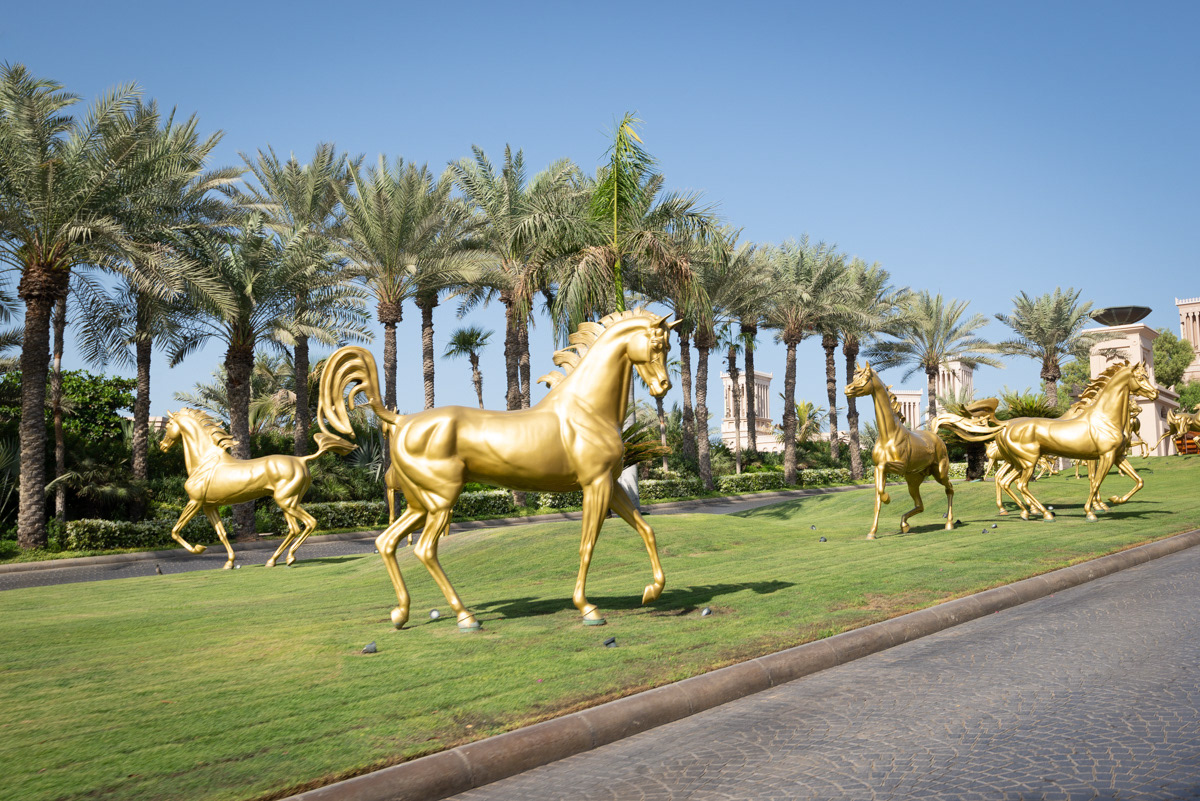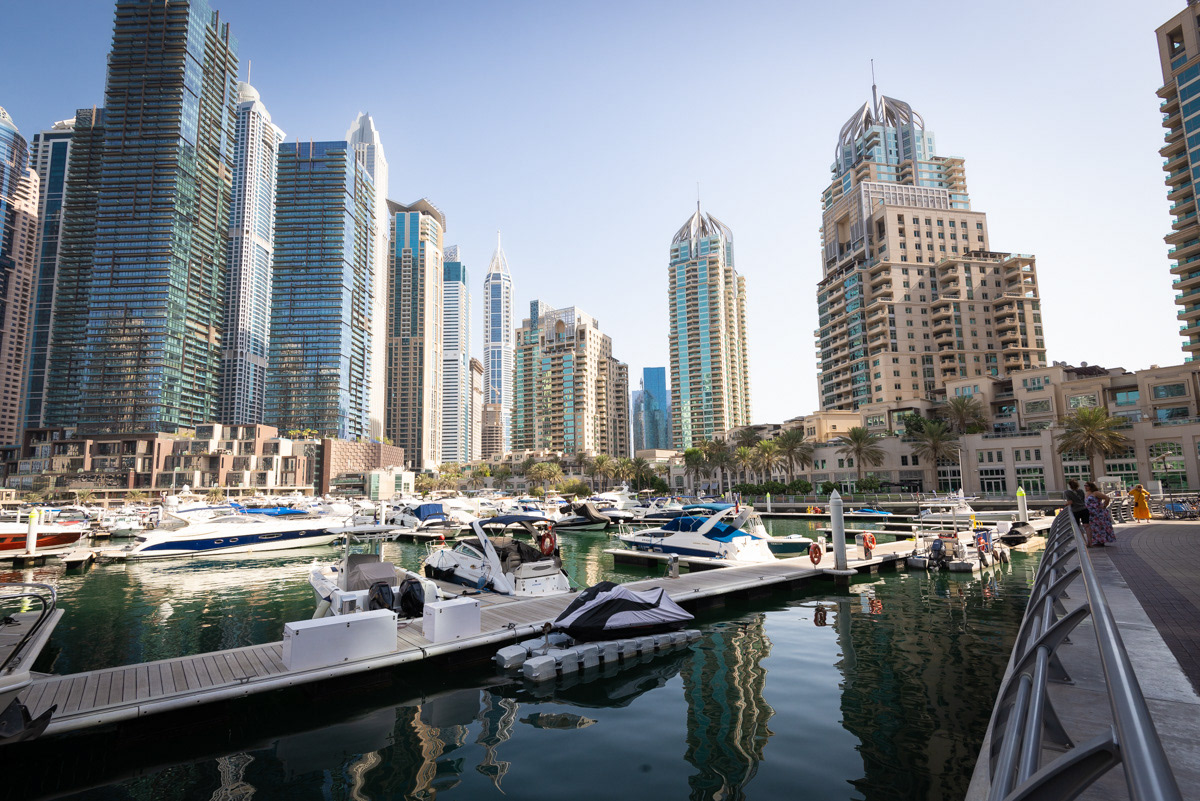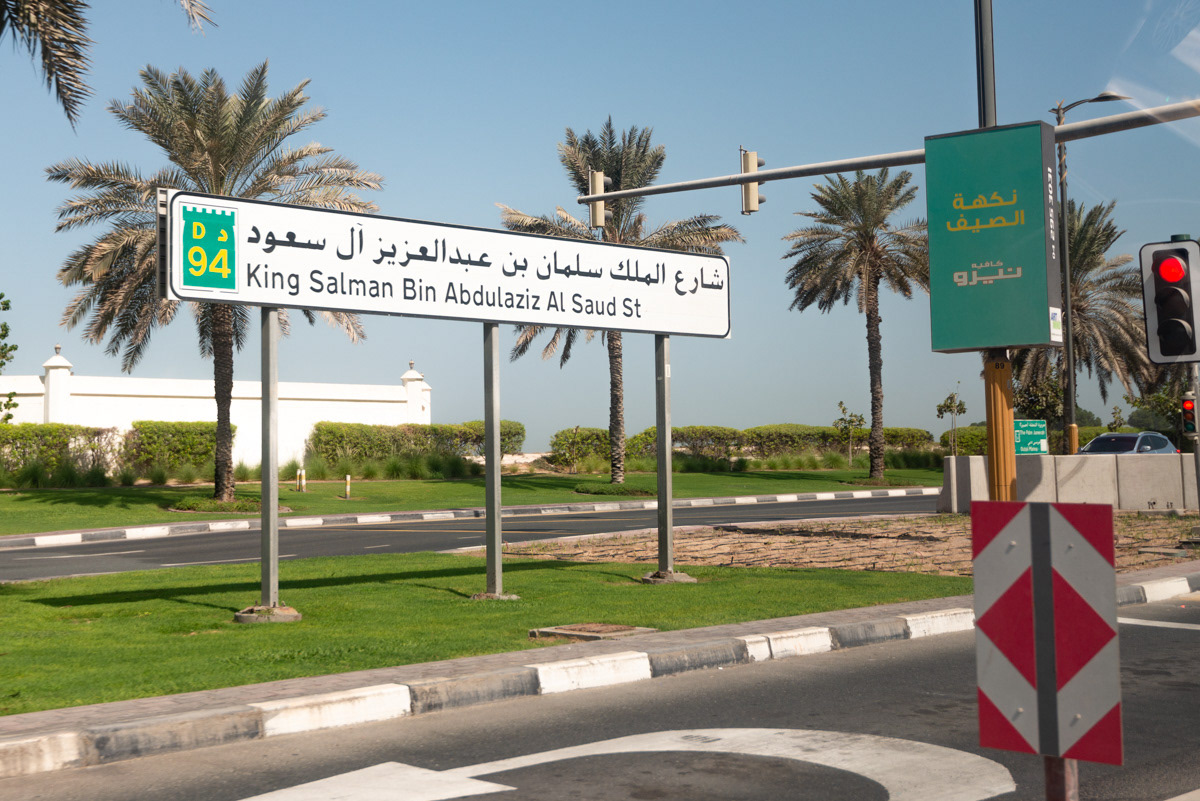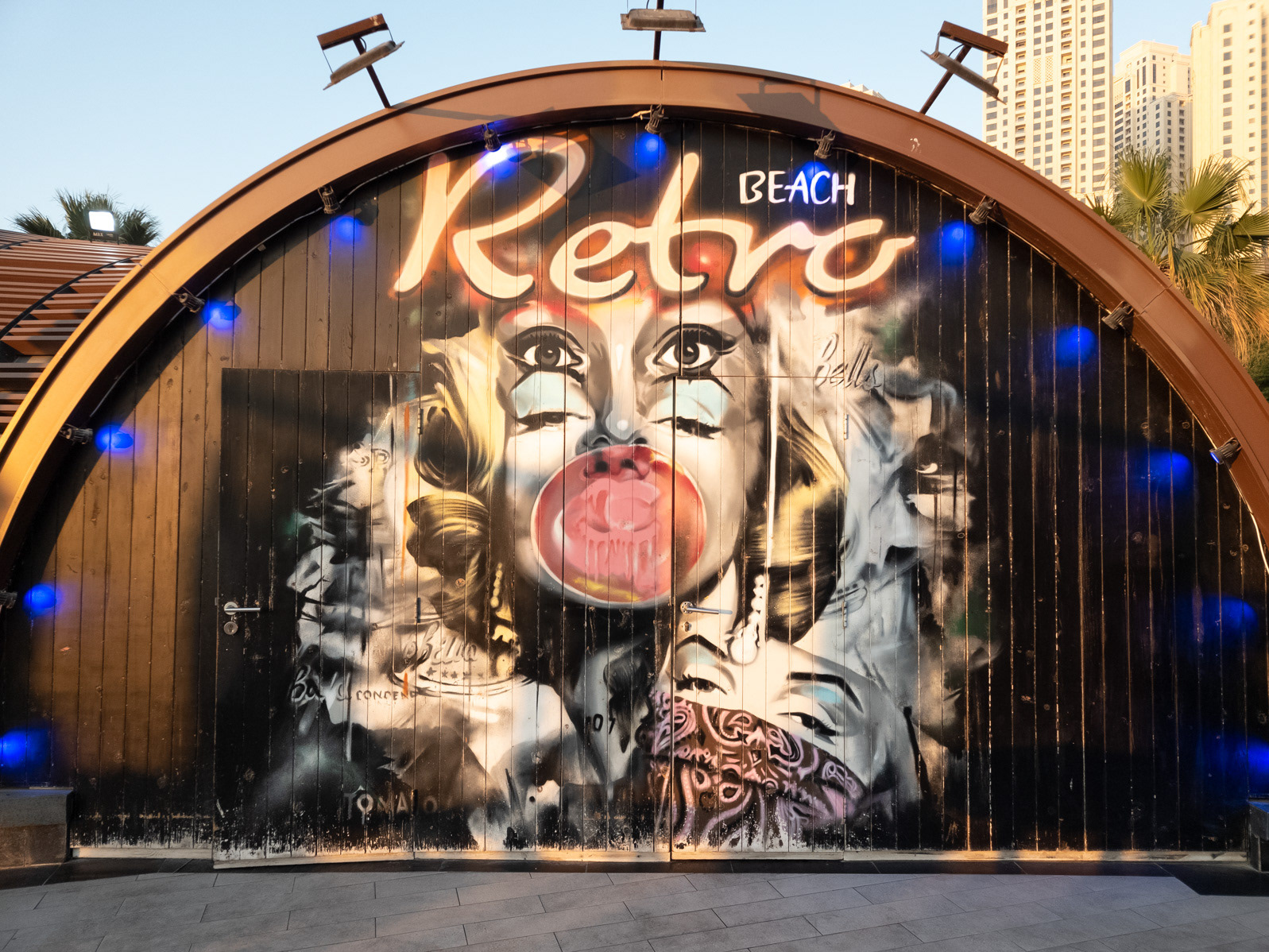As a follow-up to my prior post about the Burj Khalifa, here are few more photos of downtown Dubai. Jennifer and I went on an overview tour of the city during our visit, which introduced us to its various neighborhoods, architecture, and notable landmarks. See the caption of each image for more info.

Downtown Dubai's 'Business Bay' neighborhood, viewed from the entrance of the JW Marriott Marquis Hotel.

The Opus by OMNIYAT designed by architect Dame Zaha Hadid. Hadid was an Iraqi-British architect, artist and designer, and is recognized as an highly influential architect of the late 20th and early 21st centuries. She died suddenly of a heart attack in 2016 at age 65. Located on the Dubai Canal, it is home to the ME Dubai Hotel. The Opus was designed as two separate towers that coalesce into a singular whole - taking the form of a cube. The cube is 'eroded' in its center, creating a free-form void that is itself an important design element. The design reflects the architect's desire to explore the balance between solid and void, opaque and transparent, on both the interior and exterior. It is the only hotel for which Zaha Hadid created both its architecture and interiors.


The Da Vinci Tower (completed in 2022), designed by QHC Architects & Engineers. The tower was originally named "J One" but was re-branded as "Da Vinci Tower" in December 2021. The building's shape is said to be inspired by the extraction of the most expensive pearl, spherical in shape with a bright white pinkish color. It is located on the Dubai Canal, a 2-mile long artificial canal, which was created out of the empty desert and carries sea water to/from the Persian Gulf.


The Dubai Canal, a 2-mile long artificial canal, which was created out of the empty desert and carries sea water to/from the Persian Gulf.

This is the 5-star Jumeirah Al Qasr Hotel, located within Madinat Jumeirah, the largest resort in the UAE. Designed to resemble a traditional Arabian town, the resort has three high-end boutique hotels (Jumeirah Al Qasr, Jumeirah Mina A'Salam, and Jumeirah Al Naseem), a traditional Arabian style souq (or market), a courtyard of 29 summer houses called Jumeirah Dar Al Masyaf, over 50 restaurants and bars, and lush landscape of Venetian-like canals.

The 5-star Jumeirah Al Qasr Hotel.

The 5-star Jumeirah Al Qasr Hotel.

The Dubai Marina is a high-rise residential district developed along the Dubai Canal, a 2-mile long artificial canal, which was created out of the empty desert and carries sea water to/from the Persian Gulf. It is one of many residential/commercial developments in Dubai, which aim to fabricate desirable properties.

The Dubai Marina.

The Dubai Canal, a 2-mile long artificial canal, which was created out of the empty desert and carries sea water to/from the Persian Gulf.


On the road across the stem of the Palm Island, heading towards Atlantis, the Palm.

A portion of the Dubai skyline, viewed from The Palm.

Atlantis Dubai, The Palm, is a luxury resort/hotel a short distance outside downtown Dubai. It was built to be visually similar to the Atlantis resort in the Bahamas. The resort is the centerpiece of the world-famous Palm Jumeirah, which is a archipelago of man-made islands that form the shape of a palm.

An interesting take on a wheel-chair accessible sign.


Souq Madinat Jumeirah. A part of the larger Madinat Jumeirah development, the largest resort in the UAE, Souq Madinat Jumeirah is a popular retail shopping complex that was designed architecturally to have the feel of a traditional Arab souq (or market).

Souq Madinat Jumeirah.

Souq Madinat Jumeirah.

Souq Madinat Jumeirah.

Souq Madinat Jumeirah.

Burj Al Arab is a another of Dubai's luxury hotels. It was designed by the multidisciplinary consultancy Atkins, led by architect Tom Wright, and opened in 1999. It stands on an artificial island connected to the mainland by a curving bridge. The structure's shape is designed to resemble the sail of a ship.

The Dubai Frame is an observatory, museum, and monument in Zabeel Park, Dubai. It holds the record for the largest frame in the world. The building is a popular tourist destination, as its observation deck provides views of old Dubai to the north and newer parts to the south, serving as a symbolic gateway between the two. The project idea was initially conceived by Fernando Donis, and selected as the winner of a design competition by an international jury. It opened in January 2018.

One of Dubai's most famous landmarks, the Museum of the Future was founded by the Dubai Future Foundation and opened in February 2022. Termed a 'living museum', the museum explores how society could evolve in the coming decades using science and technology, and combines traditional exhibits with immersive theatre and themed attractions, to help visitors envision the future's "limitless possibilities." Designed by architect Shaun Killa, the museum's shape is an asymmetric torus clad in steel and glass. The museum's striking exterior stands out thanks to its artistic use of Arabic calligraphy, which also function as glass windows. Designed by Emirati artist Mattar bin Lahej, the calligraphy reflects lines of inspirational poetry by HH Sheikh Mohammed bin Rashid Al Maktoum, Vice President and Prime Minister of the UAE and Ruler of Dubai. Of the three quotes enveloping the facade, one translates to: “The future belongs to those who can imagine it, design it and execute it. It isn't something you await, but rather create.”

I particularly admired the building in the center with the maze built into its facade.


Back to United Arab Emirates


